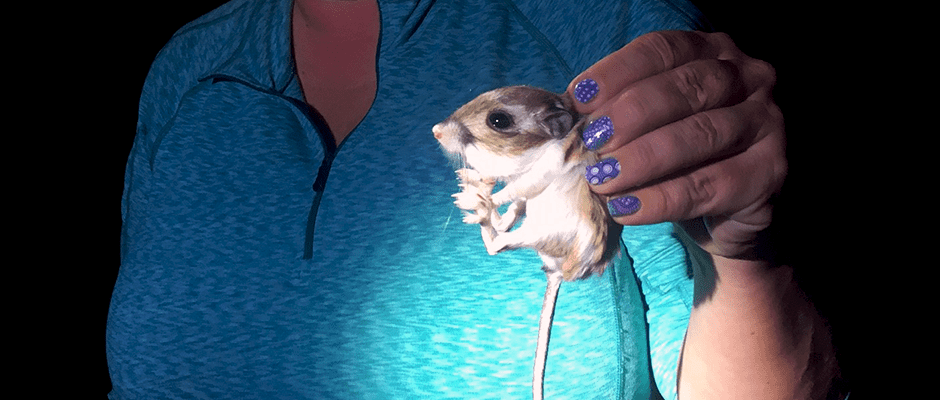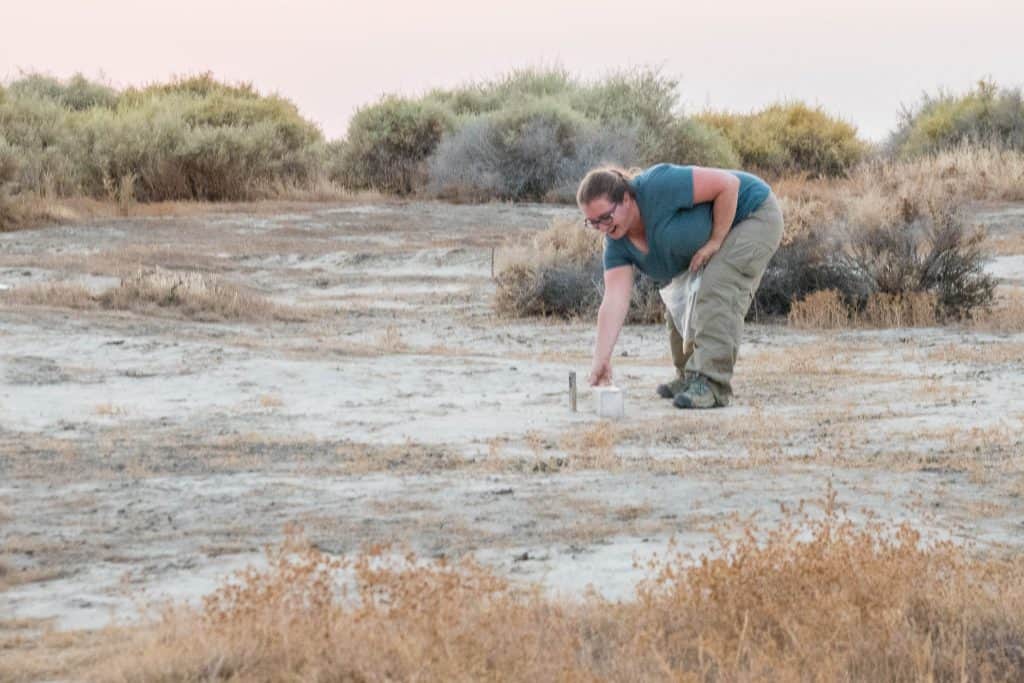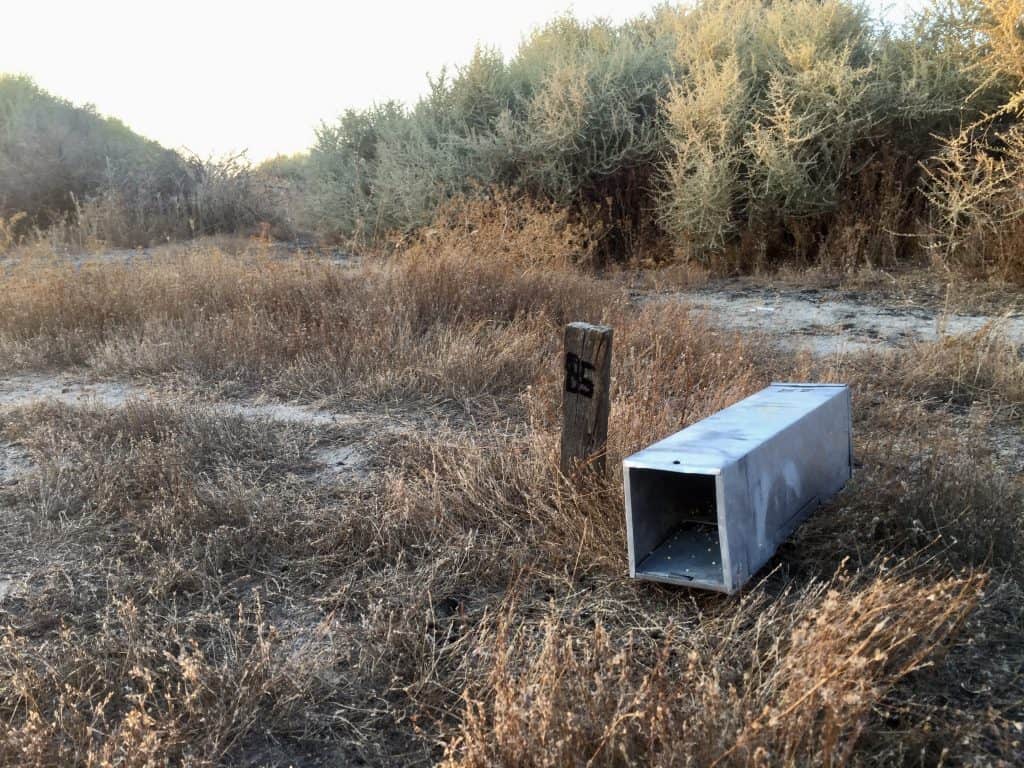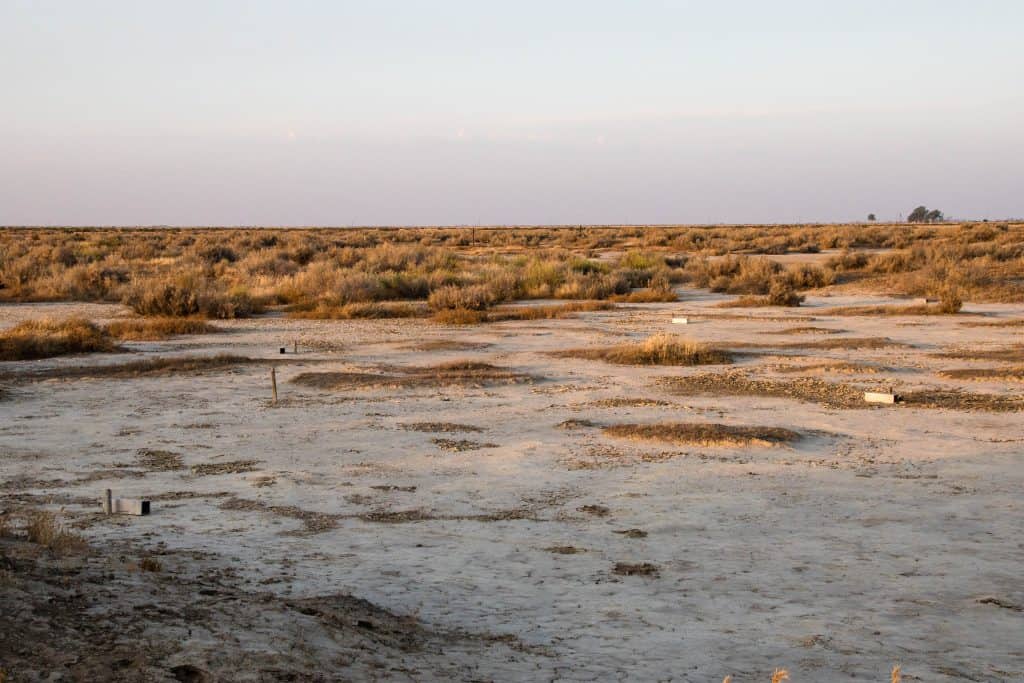Share this article
Site visit insights: Jumping into kangaroo rat habitat
Site visits are critical to helping scientists learn more about species and their habitats. The trips often take them into areas most people do not have a chance to explore, including public and privately-owned restricted sites, as well as some remote and hard-to-reach areas. “Site visit Insights” provides a behind-the-scenes perspective of wildlife biology, featuring photographs and interesting discoveries and happenings biologists experience in the field.
In cooperation with the U.S. Fish and Wildlife Service, The Wildlife Society is pleased to share these insights.
Wildlife Biologists: Lily Douglas, Dana Herman, and Tim Ludwick
Site visit location: Semitropic Ridge Preserve, Kern County, California
What was the purpose of the site visit?
We joined a team from the Center for Natural Lands Management (CNLM) for a night to help bait and check traps to learn more about the biology, behavior, and habitat of the Tipton kangaroo rat. Greg Warrick from CNLM has been studying kangaroo rat populations on their lands at the Semitropic Ridge Preserve since 2001. Both the federally-listed as endangered Tipton kangaroo rat and the non-listed Heermann’s kangaroo rat have been trapped.
Kangaroo rats are keystone species within the preserve’s alkali sink scrub habitat that is dominated by plants that can tolerate soils high in soluble salts, including saltbush, iodinebush, and seepweed. Their burrows provide shelter for other species, including the endangered blunt-nosed leopard lizard; they provide food for carnivores, including the endangered San Joaquin kit fox; and their seed-caching behavior may contribute to the dispersal and germination of some plants.
Where did you go?
The Semitropic Ridge Preserve, which is located in Kern County, northwest of the city of Wasco. Along with the California Department of Fish and Wildlife’s Semitropic Ecological Reserve and the Kern National Wildlife Refuge, CNLM’s Semitropic Ridge Preserve contributes to the protection of dwindling alkali sink scrub habitat in the area. The habitat is important to a number of endangered animals and plants.
What partners were you working with and what is the nature of SFWO’s partnership with them?
CNLM. They serve as a steward for conservation lands throughout California. All of their lands protect sensitive biological resources, including endangered and threatened species. The kangaroo rat trapping effort provides valuable data to the Sacramento Fish and Wildlife Office that contributes to conservation of the Tipton kangaroo rat.
What did you learn from this site visit that you didn’t know before?
The population of Tipton kangaroo rats and Heermann’s kangaroo rats has varied throughout the study. Kangaroo rats aggressively defend their burrows, and the larger Heermann’s kangaroo rat can out-compete the Tipton kangaroo rat for space and food when conditions are right. Greg has found that Heermann’s kangaroo rat populations generally follow annual precipitation amounts, and Tipton kangaroo rat populations vary in response to precipitation and Heermann’s kangaroo rat abundance. This year, the trapping effort captured the most Tipton kangaroo rats since 2001.
What surprises did you encounter during the site visit?
We weren’t the only ones eagerly anticipating kangaroo rats visiting the traps. We came across a rattlesnake coiled up outside a trap. Needless to say, we came back to that trap later!
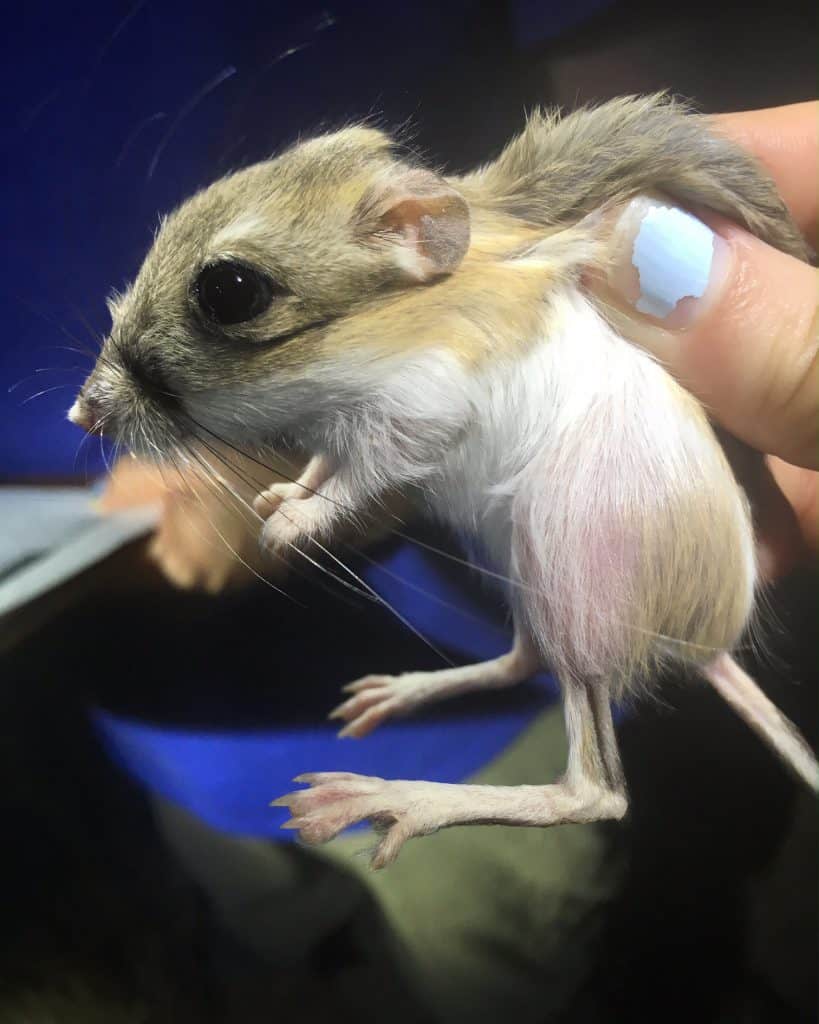
San Joaquin kangaroo rats can be distinguished from other kangaroo rats within their range because they have four toes on their hind foo. Other species have five toes. ©Dana Herman/USFWS
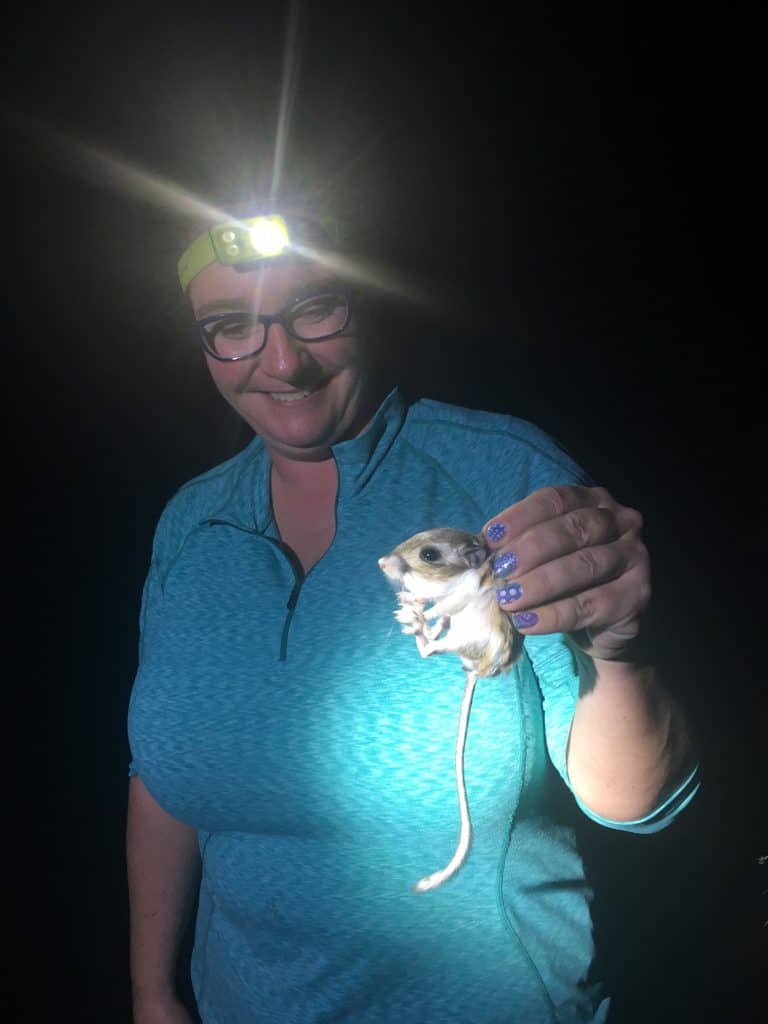
Wildlife biologist Lily Douglas holds a Tipton kangaroo rat during a population study site visit. ©Dana Herman/USFWS
Header Image: San Joaquin kangaroo rats can be distinguished from other kangaroo rats within their range because they have four toes on their hind foo. Other species have five toes. ©Dana Herman/USFWS



